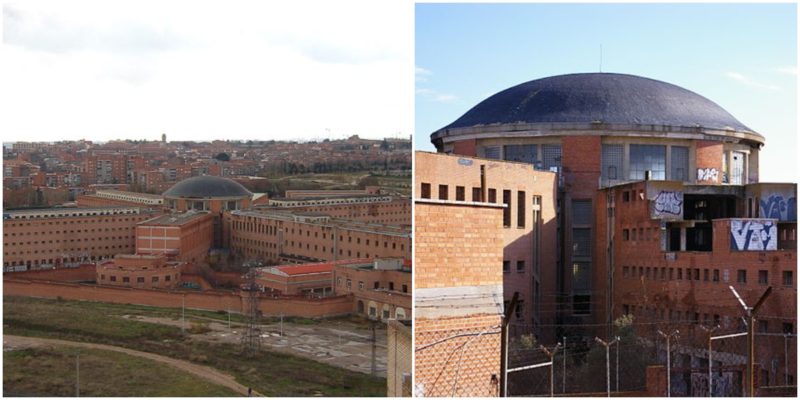A prison built by its own prisoners. Sounds ironic, right? People might think the builders know the way around and out, but not here. It was a way to send a message. Making the prisoners build it was a way to hammer home the message that there would be no escape. Although many returned later on their own. Why? Read further…
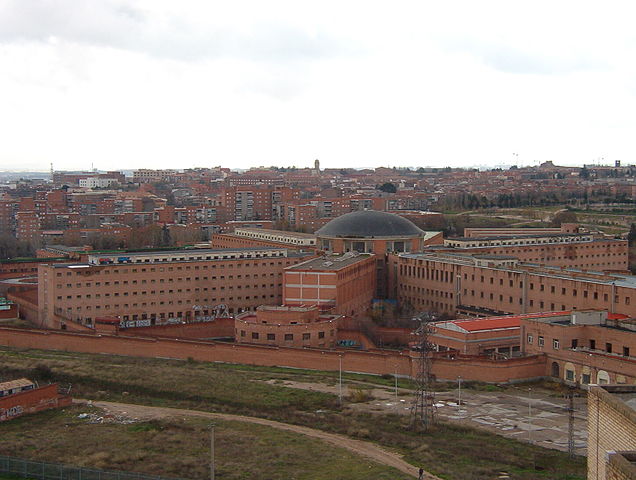
This infamous place, known as the Carabanchel Prison, was built during the Franco regime in Spain shortly after the Spanish Civil War right in the center of Madrid. It was built as a replacement for the previous Madrid prison, The Model.
The Model was practically destroyed in the Civil War as it was on the front line of the battles north of Madrid. General Franco decided, instead of repairing the old one, that his men would build a new prison.
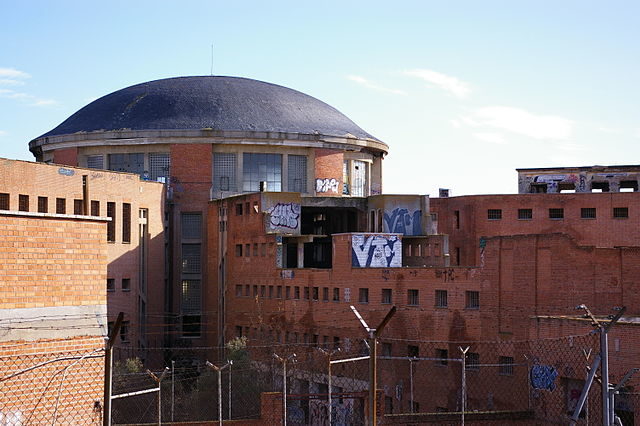
Construction began on 20 of April in 1940. The job was carried out by around a thousand political prisoners at the time, subjected to forced labor. Behind the project were the architects Vicente Agustí Elguero, José María de la Vega Samper, and Luis de la Peña Hickman. The prison was envisioned as a building it would be impossible to escape from. And making the prisoners build it was the way to show them the impossible task ahead if any of them ever thought of escaping.
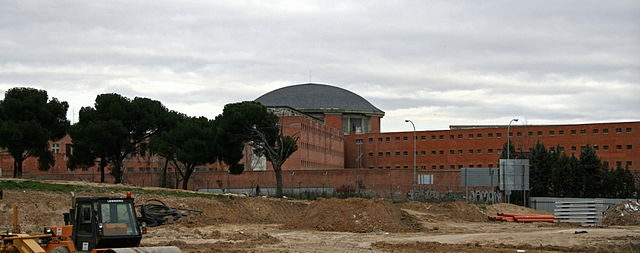
The construction was divided into two parts. The first phase took place between 1940 and 1944. In this phase, the important part was to build the four different sectors of the penitentiary. Number one was the so-called preventive prison, with a radial planning composed of four different sectors. All of them formed a cylindrical body crowned with a reinforced concrete and cast-iron dome. The second sector was the workshop prison. Another four-gallery sector, with one of them being modified to accommodate alternative uses as well. The third part was the management pavilion, filled with bureaucratic offices and roomsThe fourth and last of them were the residential ground for workers and prison officials.
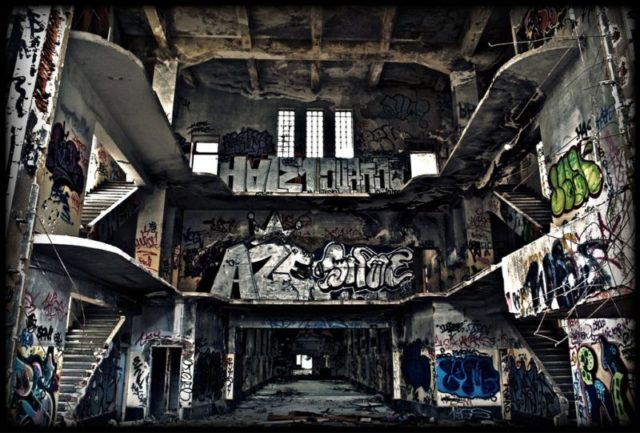
The plan was pretty much copied from the prison plan of the Model Prison in Barcelona. The Model Prison design was also very popular in Cuba. There is one that goes by the same name (Presidio Modelo) in Nueva Gerona. This one was also built by a dictatorship government lead by Gerardo Machado. The prison built in Madrid had a reinforced concrete and brick structure in its enclosed facades. From a semiotic perspective, the elements embedded into the facade can be regarded as neo-Herrerian. They were engraved there to show the pompous imperialist style driven by the ideology of the dictator general Franco. The main entrance was framed by Doric columns and also included a top balcony with a triangular pediment.
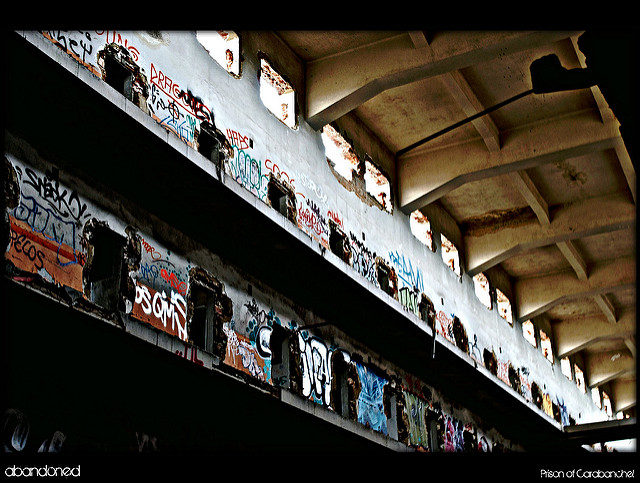
In 1998, the president of the government disbanded the prisoners and officially closed the gates of the prison. The same year, guided tours for visitors were organized by the prison officials that were soon to be out of work. After the closure, many different institutions and organizations debated and gave different ideas on what to do with the empty space and buildings. The best idea was probably to build a hospital.
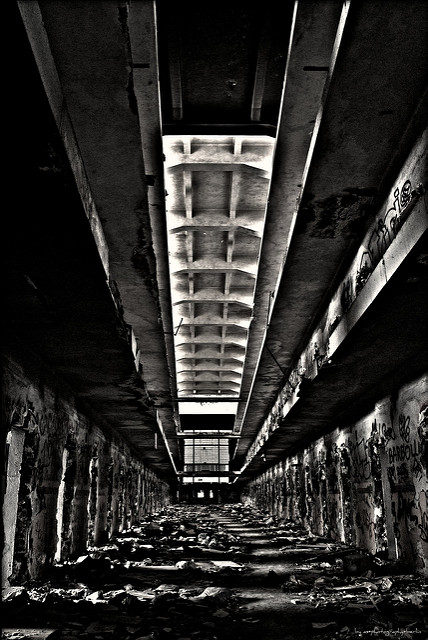
During this discussion period some people were not interested in waiting to see what would happen but decided to act. Many squatters moved inside the walls of the previous prison. Also many artists among them. The place became a graffiti and squatting Mecca. As time passed, the buildings began to break down. Doors were broken down, glass laid everywhere, and many of the metal bars were taken off to be sold as a scrap metal.
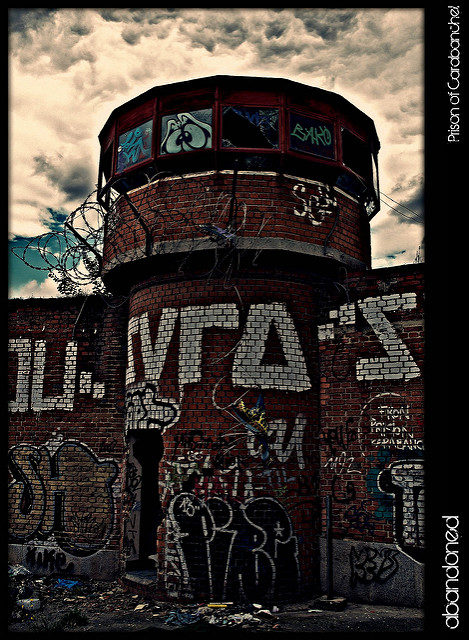
It was a sort of a city within the city for a while until the local government decided to put an end to it. An agreement was made between the city of Madrid and the Ministry of Internal Affairs to built and renovate the buildings, parks, and the hospital. The plan was opposed by many neighborhoods as it would first require the demolition of the entire prison complex.
